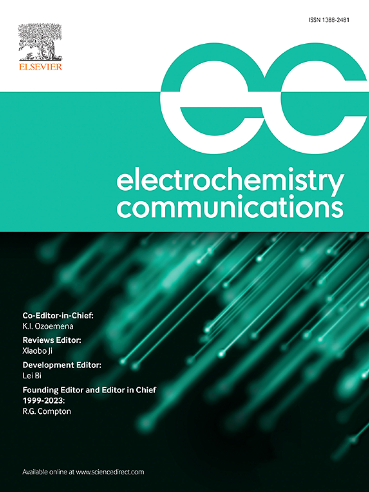Anode catalyst layer optimization in polymer electrolyte membrane water electrolysis: Modeling catalyst layer properties and interface effects
IF 4.2
3区 工程技术
Q2 ELECTROCHEMISTRY
引用次数: 0
Abstract
The design of the anode catalyst layer (ACL) and its interface to the porous transport layer (PTL) significantly influence cell behavior of proton exchange membrane water electrolysis (PEMWE). To understand the complex interaction between the two layers and its interface on cell performance, modeling approaches are necessary. In this study, we present an efficient single-phase two-dimensional model resolving both in-plane and through-plane directions of the interface and the catalyst layer. It is validated both by experimental tomographic data and polarization curves. We find that the single-phase model describes polarization behavior well at low current densities. For higher current densities deviations can be found. While the model provides quantitative predictions for most cases, the absence of detailed two-phase flow modeling may limit its accuracy at high current densities where liquid-gas interactions become more dominant. For one sample showing larger deviations at higher potentials, we apply a simple two-phase model, which seems to explain the deviations. We apply the model to determine the optimal ACL/PTL interface configurations for ACLs with various electrical conductivities. The model reveals that a tenfold increase in electrical conductivity can result in a doubling of cell current density. By explaining interactions between ACL properties, ACL/PTL design and ACL performance, the model fosters to accelerate future optimization.
聚合物电解质膜电解阳极催化剂层优化:催化剂层性质和界面效应建模
阳极催化剂层(ACL)及其与多孔传输层(PTL)界面的设计对质子交换膜电解(PEMWE)的电池行为有重要影响。为了理解两层之间复杂的相互作用及其对细胞性能的影响,建模方法是必要的。在这项研究中,我们提出了一个有效的单相二维模型,可以分辨界面和催化剂层的平面内和平面方向。实验层析数据和极化曲线验证了该方法的有效性。我们发现单相模型很好地描述了低电流密度下的极化行为。对于较高的电流密度,可以发现偏差。虽然该模型为大多数情况提供了定量预测,但缺乏详细的两相流建模可能会限制其在高电流密度下的准确性,在高电流密度下,液气相互作用变得更加重要。对于一个在高电位下显示较大偏差的样本,我们应用一个简单的两相模型,这似乎解释了偏差。我们应用该模型来确定具有不同电导率的ACL的最佳ACL/PTL接口配置。该模型表明,电导率增加十倍可以导致电池电流密度加倍。通过解释ACL属性、ACL/PTL设计和ACL性能之间的相互作用,该模型有助于加速未来的优化。
本文章由计算机程序翻译,如有差异,请以英文原文为准。
求助全文
约1分钟内获得全文
求助全文
来源期刊

Electrochemistry Communications
工程技术-电化学
CiteScore
8.50
自引率
3.70%
发文量
160
审稿时长
1.2 months
期刊介绍:
Electrochemistry Communications is an open access journal providing fast dissemination of short communications, full communications and mini reviews covering the whole field of electrochemistry which merit urgent publication. Short communications are limited to a maximum of 20,000 characters (including spaces) while full communications and mini reviews are limited to 25,000 characters (including spaces). Supplementary information is permitted for full communications and mini reviews but not for short communications. We aim to be the fastest journal in electrochemistry for these types of papers.
 求助内容:
求助内容: 应助结果提醒方式:
应助结果提醒方式:


